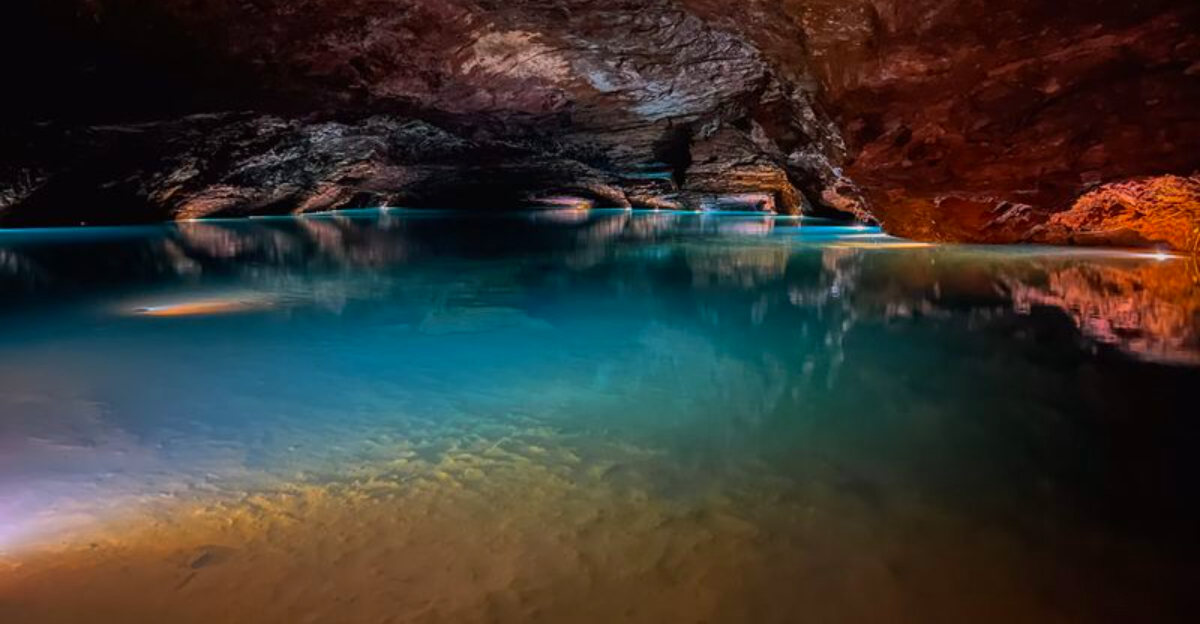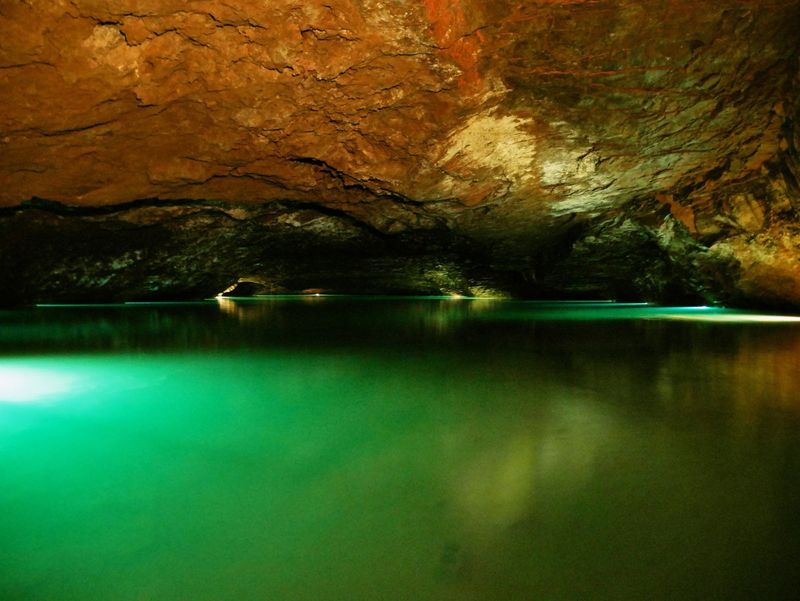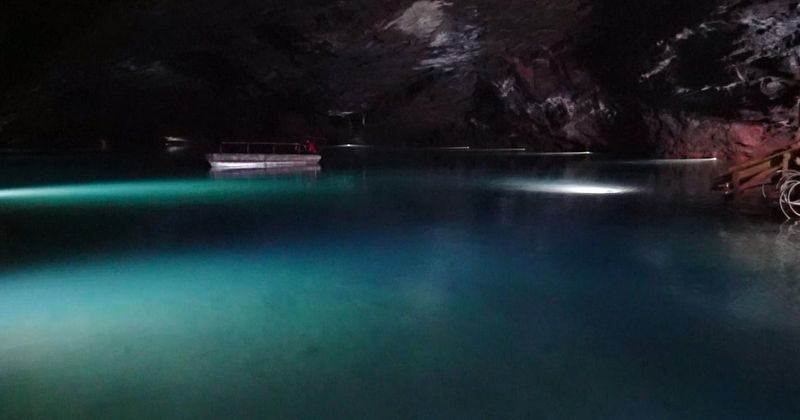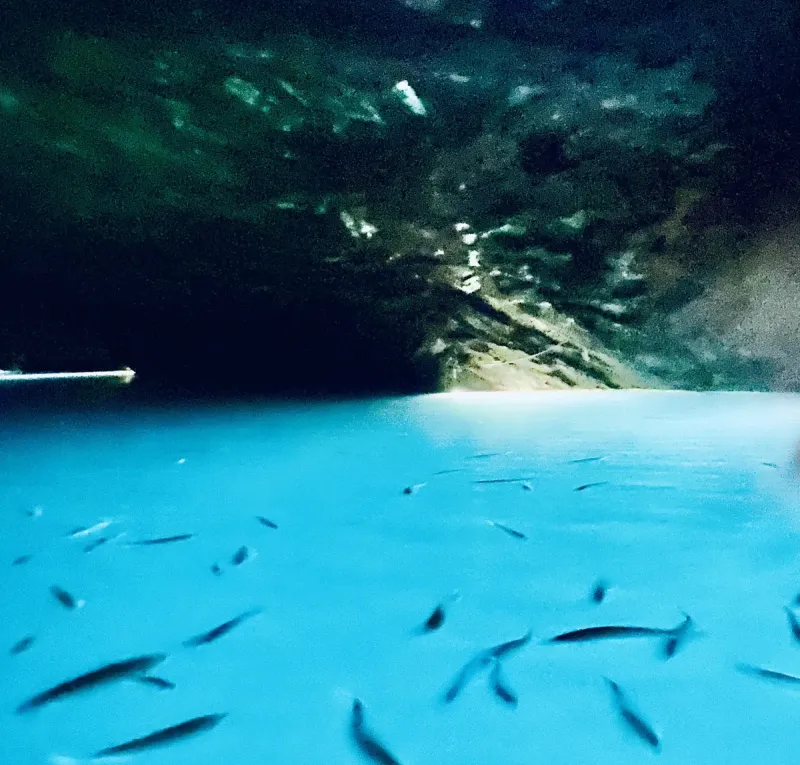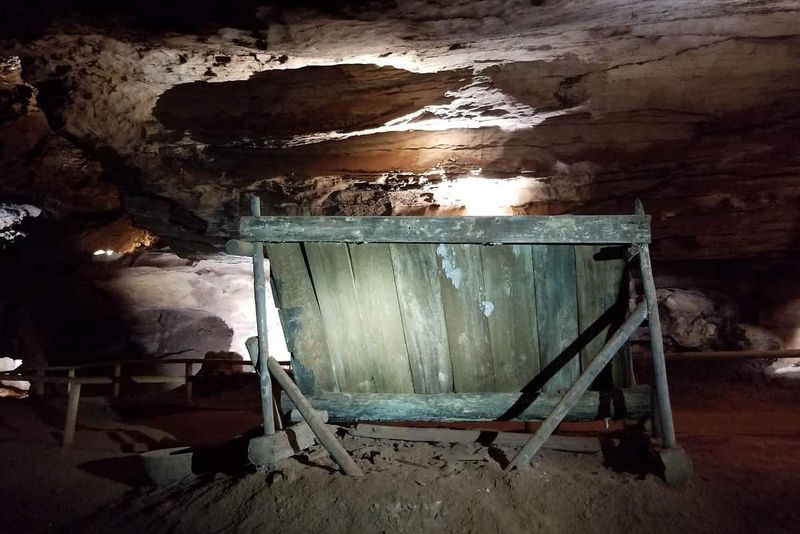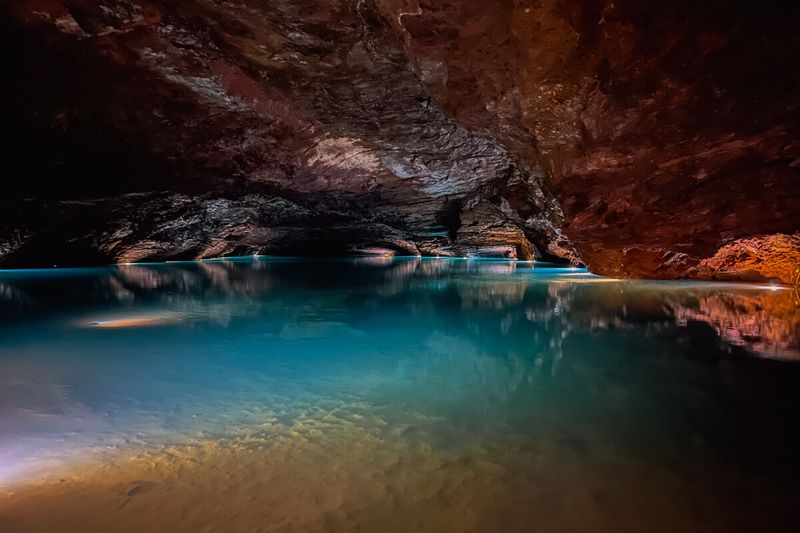Hidden beneath Tennessee’s Great Smoky Mountains lies an aquatic wonder that defies imagination – the Lost Sea, America’s largest underground lake. This massive subterranean body of water remained concealed until a brave 13-year-old boy squeezed through a narrow tunnel and stumbled upon its dark waters in 1905. Today, this remarkable discovery attracts thousands of visitors annually who come to witness this natural marvel that combines geological mystery with youthful adventure.
A Teenager’s Remarkable Cave Exploration
Ben Sands wasn’t searching for fame when he wiggled through that bicycle-tire-sized opening in 1905. The adventurous 13-year-old simply followed his curiosity into the darkness of Craighead Caverns, crawling approximately 40 feet before emerging into something extraordinary.
What greeted him was a vast underground chamber filled with water – initially appearing as modest knee-deep pools. His accidental discovery would eventually be recognized as America’s largest non-subglacial underground lake.
Young Ben’s courage and spirit of exploration exemplify how significant discoveries often come from unexpected sources. While professional cave explorers have since mapped portions of the lake, they’ve never found its boundaries, with divers documenting over 13 acres without reaching its end.
The Mysterious Extent of the Lost Sea
Stretching into darkness beyond the reach of powerful flashlights, the Lost Sea presents an ongoing geographical puzzle. Its visible portion spans approximately 800 feet long by 220 feet wide, covering about 4.5 acres – but that’s merely what we can see.
Multiple scientific expeditions have attempted to chart its boundaries using advanced sonar and diving teams. One notable exploration sent divers with guideline reels who mapped passages extending over 13 acres without ever finding the lake’s limits.
The water’s crystal clarity belies its depth, which reaches 70 feet in places. This underground marvel sits approximately 140 feet below the surface in a network of limestone caves, creating an isolated aquatic environment that has remained largely unchanged for thousands of years.
Rainbow Trout in Perpetual Darkness
Roughly 300 rainbow trout call the Lost Sea home, creating one of nature’s most fascinating examples of adaptation. Originally introduced decades ago, these fish have evolved remarkable changes to survive in their lightless habitat.
The most striking transformation appears in their physical characteristics. Without sunlight, many have lost their vibrant coloration, developing paler bodies that require less energy to maintain. Even more fascinating is their eyesight – progressively diminishing across generations as the fish adapt to navigate by other senses in the perpetual darkness.
Visitors touring the lake often witness these unique creatures gliding through crystal-clear waters, their ghostly forms appearing almost otherworldly as they approach boats. These evolutionary marvels provide living evidence of how quickly species can adapt to extreme environments.
Historical Significance Beyond Geology
Long before becoming a tourist attraction, the cave system housing the Lost Sea served multiple purposes throughout American history. Cherokee tribes utilized these natural chambers for shelter and ceremonial gatherings, leaving behind artifacts that archaeologists have carefully documented.
During the Civil War, Confederate soldiers harvested the cave’s saltpeter deposits – a crucial ingredient in gunpowder production. Their mining operations left visible marks still evident today, including tool scrapes and support structures.
Perhaps most fascinating are the ancient human footprints discovered in deeper sections of the caverns, carbon-dated to approximately 9,500 years ago. These rare impressions offer tangible connections to prehistoric Americans who ventured into these depths with nothing more than animal fat torches, proving the cave’s long-standing relationship with human exploration.
From Hidden Wonder to National Landmark
The transformation from secret underground lake to celebrated national treasure happened gradually after Ben’s discovery. Commercial tours began in the 1940s, with glass-bottom boats allowing visitors glimpses into the mysterious depths below.
Recognition came officially in 1974 when the National Park Service designated the Lost Sea as a National Natural Landmark. Today, approximately 150,000 annual visitors descend into the caverns via a sloping pathway that leads to the boat launch area.
The constant 58°F temperature creates a misty atmosphere where visitors can witness rare anthodites – delicate crystalline formations nicknamed “cave flowers” that radiate outward like frozen starbursts. These formations, combined with traditional stalactites and stalagmites, create an otherworldly landscape that continues to inspire awe just as it did when a young explorer first stumbled upon it over a century ago.
